Your cart is currently empty!
Search results for: “66”
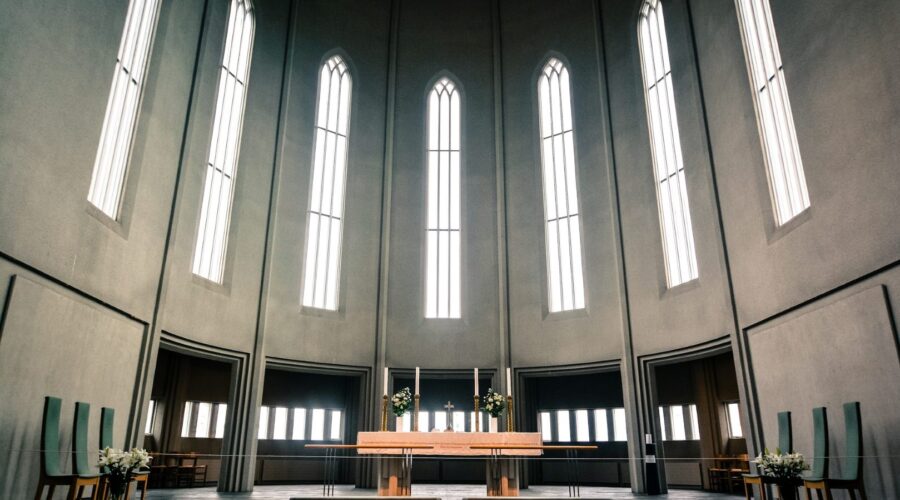
Henri de Lubac: A Luminary of Catholic Theology
Early Life and Education
Henri de Lubac, born Henri Marie Joseph Sortais in 1896, was a renowned French Catholic cardinal and theologian. Growing up in a devout Catholic family, he developed a deep passion for theological studies from a young age.
After completing his secondary education, de Lubac joined the Society of Jesus in 1913. He pursued his theological studies at the Pontifical Biblical Institute in Rome and was ordained a priest in 1927.
Career and Theological Contributions
Exegesis and Scripture
De Lubac’s initial focus was on exegesis and biblical studies. He argued for a holistic approach to scriptural interpretation, emphasizing the role of tradition and the need for a deep understanding of the spiritual and historical contexts of biblical texts.
The Supernatural
De Lubac’s most significant contribution to theology lies in his exploration of the concept of the supernatural. In his magnum opus, Surnaturel (1946), he challenged the prevailing idea that the supernatural is something entirely separate from the natural. Instead, he posited that they are intimately intertwined, with grace elevating nature and leading it to its ultimate fulfillment.
The Church and the World
De Lubac also delved into ecclesiology, examining the relationship between the Church and the world. He viewed the Church not as an isolated institution but as a vital part of human society, called to engage with the world and transform it through the Gospel message.
Ecumenism and Interfaith Dialogue
As an advocate for ecumenism, de Lubac sought to foster unity among Christian denominations. He also promoted interfaith dialogue, recognizing the value of learning from other religions and seeking common ground.
Influence and Recognition
Theological Revival
De Lubac’s writings had a profound influence on 20th-century theology. They helped spark a revival of interest in dogmatic theology and inspired a generation of scholars and theologians.
Cardinal and Theologian
In 1983, de Lubac was appointed a cardinal by Pope John Paul II in recognition of his outstanding contributions to Catholic theology. He became a renowned figure within the Church and continued to write, teach, and engage in theological dialogue.
Key Insights from De Lubac’s Theology
Importance of Tradition
De Lubac emphasized the centrality of tradition in understanding the Christian faith. He argued that the Church’s teachings and practices are not arbitrary but rooted in the apostolic tradition.
Dialogue and Inclusivity
De Lubac believed that dialogue was essential for fostering unity and understanding. He encouraged Catholics to engage with other Christians and people of different faiths.
Christ-Centeredness
At the heart of de Lubac’s theology lay a profound Christ-centeredness. He saw Christ as the fulfillment of all human hopes and the key to understanding the meaning of life.
Legacy and Impact
Henri de Lubac left an enduring legacy in Catholic theology. His writings continue to be studied and inspire theologians and believers alike. His emphasis on tradition, dialogue, and the centrality of Christ has shaped the course of contemporary Catholic thought.
Further Reading
Books by Henri de Lubac
Books on Henri de Lubac
- Henri de Lubac: A Biography by Michael J. Marthaler
- Henri de Lubac: Theologian of the Twentieth Century by Jean-Yves Lacoste
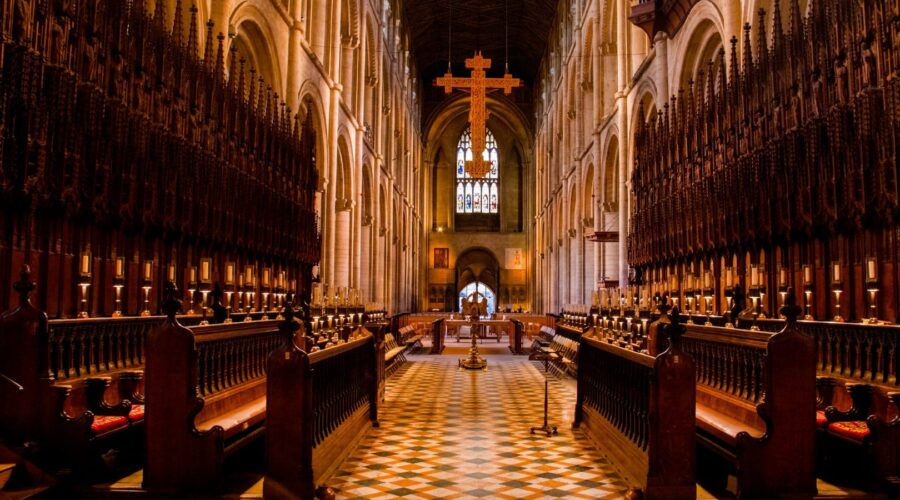
Explore the Episcopal Lectionary for 2022: A Comprehensive Guide
Introduction
The Episcopal Lectionary is a comprehensive collection of biblical passages selected for use in worship throughout the year. It provides a structured approach to reading, reflecting, and applying the Word of God in the Episcopal Church. The 2022 Episcopal Lectionary offers a unique opportunity to delve into the richness of Scripture and its relevance to our daily lives.
Overview of the Lectionary
The 2022 Episcopal Lectionary is a three-year cycle, also known as the Revised Common Lectionary (RCL), which includes:
- Daily readings for morning and evening prayer
- Proper readings for Sundays and major feasts
- Readings for the Daily Office and other special liturgies
Daily Readings
The daily readings are arranged according to a set pattern, with a different theme for each day of the week:
Day Theme Sunday Resurrection Monday Creation and Fall Tuesday Israel’s History Wednesday The Wisdom of Israel Thursday The Prophets Friday The Gospels Saturday The Apostles Proper Readings
The proper readings for Sundays and major feasts are selected to correspond to the liturgical season and the specific theme of the day. They include:
- An Old Testament reading
- A Psalm or Canticle
- An Epistle reading
- A Gospel reading
Using the Lectionary in Worship
The Lectionary serves as a guide for planning and conducting worship services. It helps ensure that:
- The congregation reads a wide range of Scripture
- The readings connect to the themes of the liturgical year
- The Scriptures are proclaimed in a meaningful and engaging way
Selection Process
The readings in the Lectionary are carefully selected by a committee of biblical scholars. They consider:
- Theological themes
- Liturgical context
- Cultural relevance
- Diversity of Scripture
Lectio Divina
The Lectionary can be a valuable tool for lectio divina, a spiritual practice of reading and meditating on Scripture. By following the daily readings, individuals and groups can:
- Read Scripture attentively
- Reflect on its meaning
- Pray in response to the Word
Themes of the Lectionary in 2022
The 2022 Episcopal Lectionary follows a specific theme each liturgical season:
Christmas Season
The focus is on the birth and ministry of Jesus Christ, emphasizing love, joy, and hope.
Season of Epiphany
This season explores God’s revelation to the world through Jesus, emphasizing light, knowledge, and outreach.
Season of Lent
Lent is a time of penitence and preparation for Easter, highlighting repentance, self-examination, and renewal.
Season of Easter
This season celebrates the resurrection of Jesus Christ, emphasizing victory, life, and the presence of the Holy Spirit.
Season of Pentecost
Pentecost commemorates the giving of the Holy Spirit, emphasizing mission, empowerment, and the growth of the Church.
Season of Kingdom
This season anticipates the return of Christ, emphasizing hope, judgment, and the reign of God.
Resources and Further Reading
- The Lectionary Page
- Episcopal Church Lectionary Resources
- The Revised Common Lectionary: Worship Resources
- Revised Common Lectionary: Daily Readings Year A
Conclusion
The 2022 Episcopal Lectionary offers a rich and engaging journey through Scripture. By following its readings and themes, individuals and communities can deepen their understanding of the Word of God and apply its teachings to their daily lives. Whether used for personal devotion, corporate worship, or lectio divina, the Lectionary is a valuable resource for exploring the richness and relevance of the Bible.
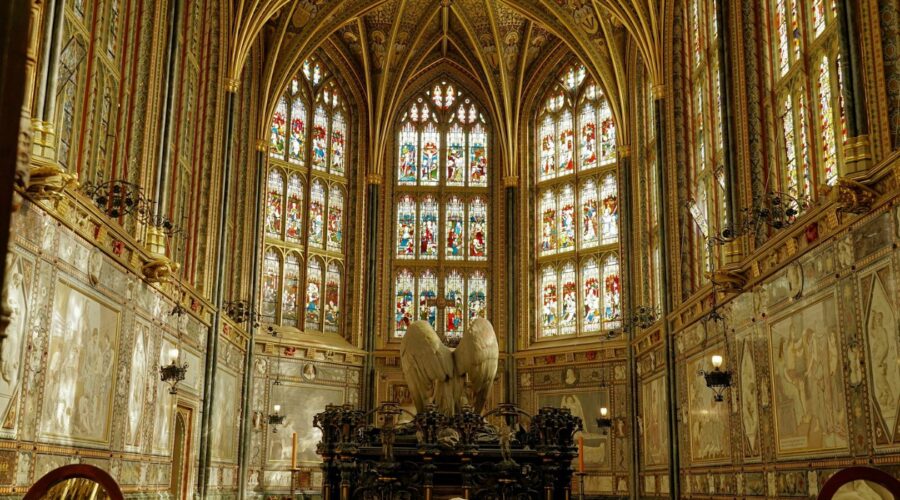
Discover the Majestic Grandeur of St. Paul’s Cathedral: An Architectural Masterpiece
Introduction
Nestled majestically in the heart of the City of London, St. Paul’s Cathedral stands as a timeless symbol of architectural brilliance. Its stunning dome, towering spires, and exquisite interior have captivated hearts and inspired awe for centuries. In this comprehensive guide, we embark on a journey to uncover the captivating history, intricate design, and enduring significance of this iconic cathedral.
Historical Overview
Origins and Construction
The origins of St. Paul’s Cathedral can be traced back to the 7th century, when a wooden church was erected on Ludgate Hill. Over the centuries, successive iterations of the cathedral were built, including a Romanesque basilica and a Gothic structure. The current cathedral, designed by Christopher Wren after the Great Fire of London in 1666, was constructed over a period of 35 years, from 1675 to 1710.
Sir Christopher Wren’s Vision
Sir Christopher Wren, the renowned architect behind St. Paul’s Cathedral, envisioned a masterpiece that would rival the great cathedrals of Europe. Inspired by the Italian Renaissance and Baroque styles, Wren designed a majestic structure with a central dome and two flanking towers.
Architectural Marvel
The Dome
The centerpiece of St. Paul’s Cathedral is its magnificent dome, one of the largest in the world. Standing at 111 meters (365 feet), the dome is double-shelled, with an outer dome visible from afar and an inner dome that creates an awe-inspiring interior space.
Whispering Gallery
Beneath the outer dome lies the Whispering Gallery, an acoustic wonder where a whisper uttered against the wall can be heard clearly on the opposite side of the dome, over 30 meters away.
Stone Gallery and Golden Gallery
External galleries, including the Stone Gallery and Golden Gallery, offer breathtaking panoramic views of London.
Interior Grandeur
The interior of St. Paul’s Cathedral is equally impressive, featuring a vast nave, soaring transepts, and an exquisite high altar.
Cultural and Ecclesiastical Significance
National Symbol
St. Paul’s Cathedral has served as a national symbol for centuries, hosting royal weddings, funerals, and other significant events in British history.
Religious Centerpiece
As the seat of the Bishop of London, St. Paul’s Cathedral remains an active place of worship and a spiritual haven for the Anglican Communion.
Historical Events
The cathedral has witnessed numerous historical events, including the signing of the Magna Carta in 1215 and the funeral of Lord Nelson in 1805.
Visiting St. Paul’s Cathedral
Practical Information
- Address: St. Paul’s Churchyard, London EC4M 8AD
- Opening Hours: Monday-Saturday 8:30 am – 4:30 pm, Sunday for worship
- Admission Fees: Vary depending on the level of access desired
Tips for Visitors
- Book tickets in advance to avoid queues, especially during peak season.
- Allow plenty of time to explore the cathedral, as there is much to see and admire.
- Consider guided tours to delve deeper into the history and architecture.
- Dress respectfully, as the cathedral is an active place of worship.
Accessibility
St. Paul’s Cathedral strives to be accessible to all visitors. There is level access to the cathedral floor and limited wheelchair access to the Whispering Gallery and Stone Gallery.
Conclusion
St. Paul’s Cathedral is an architectural masterpiece that has stood the test of time. Its majestic dome, intricate interior, and enduring significance have placed it among the most iconic and beloved landmarks in the world. Whether you are a history buff, an architecture enthusiast, or simply seeking spiritual inspiration, a visit to St. Paul’s Cathedral is an unforgettable experience that will leave you in awe.
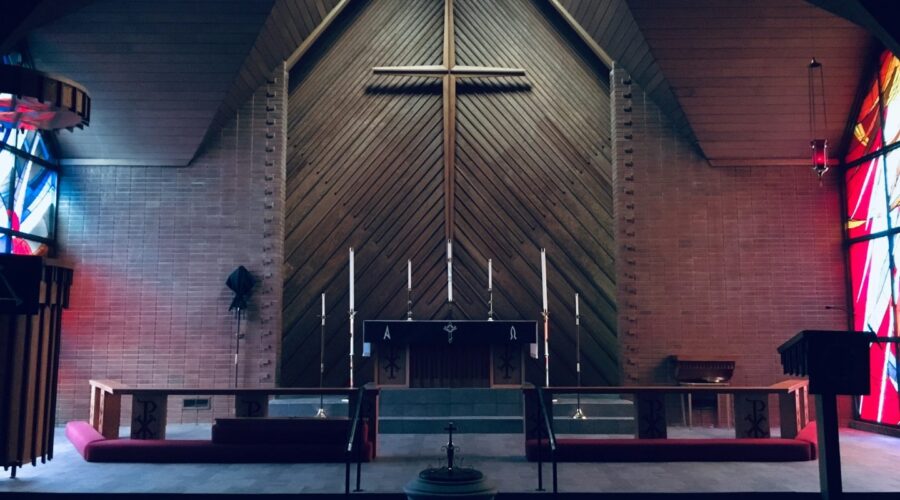
Saint Paul’s: A Comprehensive Guide to the Iconic London Cathedral
Introduction
Saint Paul’s Cathedral, a towering masterpiece of architecture, stands majestically in the heart of London, England. This iconic landmark has witnessed centuries of history and remains a symbol of faith, resilience, and grandeur. This comprehensive guide will delve into the captivating world of Saint Paul’s, exploring its architectural splendor, historical significance, and the treasures it holds within.
Architecture and Design
Saint Paul’s Cathedral is renowned for its breathtaking architecture and innovative design. Its construction, spanning over three decades, was a testament to the ingenuity and vision of Sir Christopher Wren, the architect behind this architectural marvel.
The Majestic Dome
The most striking feature of Saint Paul’s is its colossal dome, a masterpiece of engineering and artistry. Wren designed a double-shelled dome, with an outer dome visible from afar and an inner dome supporting the structure. The inner dome features intricate mosaic decorations, while the outer dome is covered with lead sheathing and crowned by a lantern.
The Impressive Facade
The facade of Saint Paul’s is equally impressive, dominated by a grand portico supported by Corinthian columns. Above the portico stands a pediment adorned with sculptures depicting the conversion of St. Paul. Two towers flank the facade, providing a symmetrical balance to the overall design.
The Grand Interior
The interior of Saint Paul’s is as awe-inspiring as its exterior. The vast nave is lined with towering columns and arches, creating a sense of space and grandeur. The transepts extend from the nave, forming a cruciform floor plan. The cathedral is richly decorated with mosaics, frescoes, and elaborate carvings.
Historical Significance
Saint Paul’s Cathedral has witnessed key moments in British history and played a pivotal role in shaping the city of London.
The Great Fire of London
The original St. Paul’s Cathedral was destroyed in the Great Fire of London in 1666. The cathedral became the symbol of the city’s resilience and determination to rebuild.
Royal Weddings and Celebrations
Over the centuries, Saint Paul’s has hosted numerous royal weddings, including the marriage of Prince Charles and Lady Diana in 1981. It has also been the venue for many state events and celebrations.
The Blitz
During the Second World War, Saint Paul’s suffered significant damage from German bombing raids known as the Blitz. However, the cathedral remained a beacon of hope and a symbol of defiance during the darkest days.
Treasures and Artifacts
Saint Paul’s Cathedral houses an impressive collection of treasures and artifacts that reflect its rich history and cultural significance.
The Whispering Gallery
The Whispering Gallery, located high within the dome, is renowned for its acoustic properties. A whisper uttered against one wall can be heard clearly on the opposite side.
The Stone Gallery
The Stone Gallery, perched atop the dome, offers breathtaking panoramic views of London. Visitors can climb the 528 steps to reach this vantage point.
The Choir and Chapter House
The choir is renowned for its beautiful wooden stalls and intricate carvings. The Chapter House, an adjacent building, houses a collection of medieval manuscripts and documents.
Visiting Saint Paul’s
Planning a visit to Saint Paul’s Cathedral is an unforgettable experience. Here are some helpful tips and information:
Tickets and Admission
Tickets for Saint Paul’s Cathedral can be purchased online or at the cathedral entrance. Various ticket options are available, including guided tours and access to different areas of the cathedral.
Dress Code
Saint Paul’s is a place of worship, and visitors are requested to dress respectfully. Appropriate attire includes modest clothing that covers the shoulders and knees.
Accessibility
Saint Paul’s Cathedral is accessible to wheelchair users and visitors with mobility impairments. There is a ramp leading to the cathedral entrance, and wheelchairs are available for hire.
Conclusion
Saint Paul’s Cathedral is a living testament to human ingenuity, faith, and the power of architecture. Its awe-inspiring dome, grand interior, and rich history make it a must-visit destination for visitors to London. From its resilience in the face of adversity to its enduring beauty, Saint Paul’s continues to inspire and captivate generations. Whether exploring its architectural wonders or witnessing its role in shaping British history, a visit to Saint Paul’s Cathedral is a truly unforgettable experience.
FAQs
What are the dimensions of Saint Paul’s Cathedral?
Saint Paul’s Cathedral is 515 feet long, 285 feet wide, and 365 feet high to the top of the cross.
Who is buried in Saint Paul’s Cathedral?
Saint Paul’s Cathedral is the burial place of many famous figures, including Sir Christopher Wren, Admiral Lord Nelson, and the Duke of Wellington.
What is the famous golden ball on top of the dome?
The golden ball on top of the dome is known as the Golden Ball and Cross and is made of gilded copper. It weighs 5,500 pounds and is 6 feet in diameter.
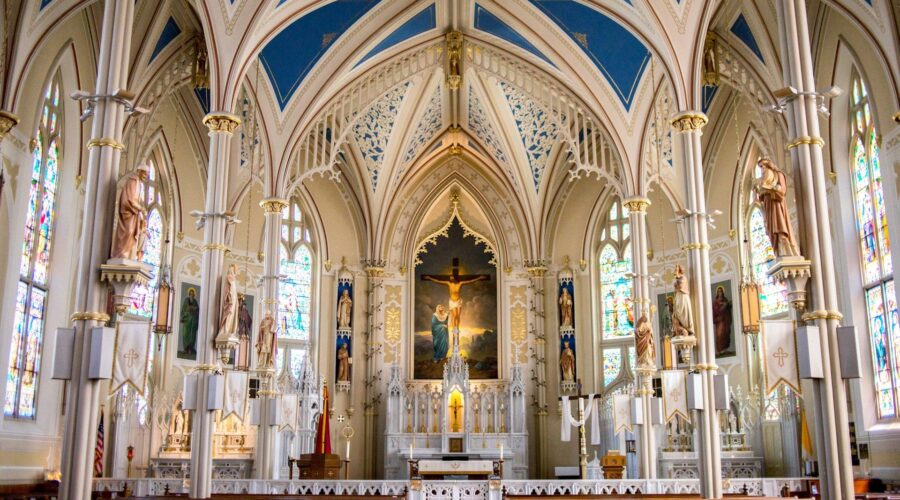
Discover the Enchanting History and Inspiring Legacy of St. Bernadette Church
A Majestic Sanctuary in the Heart of Lourdes
Nestled amidst the picturesque foothills of the Pyrenees in Lourdes, France, St. Bernadette Church stands as a testament to faith, healing, and spiritual transformation. Originally constructed as a chapel in 1866, the church was consecrated in 1871 and underwent significant expansion in the following decades. Today, St. Bernadette Church is one of the most iconic religious landmarks in the world, welcoming millions of pilgrims each year.

The Miraculous Apparitions
The history of St. Bernadette Church is inextricably intertwined with the remarkable apparitions experienced by St. Bernadette Soubirous in 1858. A young peasant girl, Bernadette witnessed 18 visions of a beautiful lady who identified herself as the Immaculate Conception. These apparitions culminated in a miraculous spring emerging from the ground, which has since become a symbol of healing and hope for millions.
A Shrine for the Sick and a Place of Pilgrimage
In the decades following the apparitions, Lourdes became a renowned destination for pilgrims seeking spiritual solace and physical healing. The waters of the spring are believed to possess miraculous properties, and countless individuals have reported miraculous cures after bathing in or drinking the water. St. Bernadette Church serves as a sanctuary for the sick, offering them a place for prayer, reflection, and hope.
Architectural Splendor and Artistic Treasures
St. Bernadette Church is an architectural masterpiece that reflects the grandeur of its purpose. The church features a Neo-Gothic design with towering spires, intricate stained-glass windows, and opulent marble interiors. It houses numerous artistic treasures, including statues, paintings, and mosaics that depict scenes from the life of St. Bernadette and the history of Lourdes.
Guided Tours and Spiritual Programs
Visitors to St. Bernadette Church can embark on guided tours that provide insights into the history, architecture, and significance of this sacred site. The church also offers a range of spiritual programs, including Masses, prayer services, and adoration of the Blessed Sacrament.
Conclusion
St. Bernadette Church is more than just a religious building; it is a living testament to the power of faith, hope, and the miraculous. Whether you are a pilgrim seeking spiritual renewal, a history buff, or simply an admirer of beautiful architecture, a visit to this iconic sanctuary is an unforgettable experience that will leave a lasting impression.
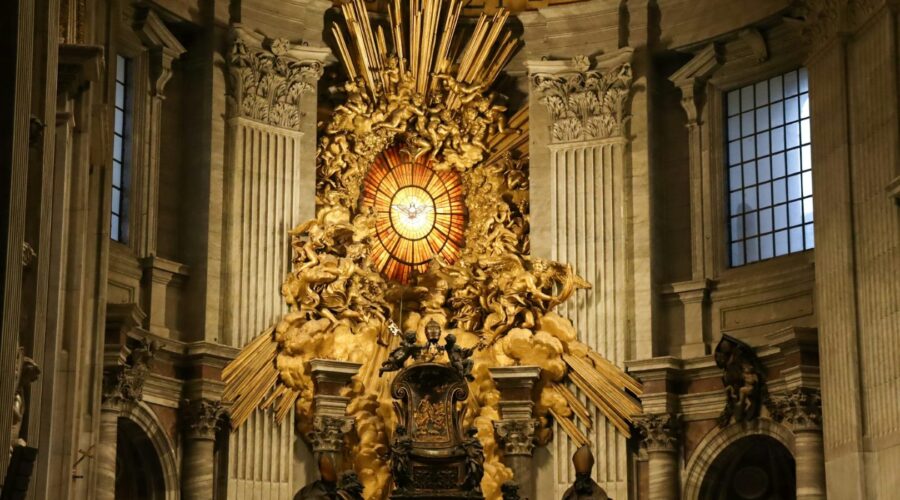
Discover the Rich History and Significance of Our Lady of Guadalupe Catholic Church
Our Lady of Guadalupe Catholic Church, nestled in the heart of [City Name], has served as a beacon of faith and a spiritual sanctuary for countless Catholics for over [Number] years. This iconic church holds immense historical and religious significance, attracting pilgrims and visitors from far and wide.
The Apparition of Our Lady
The church’s origins can be traced back to the miraculous apparition of Our Lady of Guadalupe to Juan Diego Cuauhtlatoatzin, an indigenous peasant, in 1531. According to tradition, Mary appeared to Juan Diego on Tepeyac Hill, near Mexico City, and asked him to build a church in her honor. When Juan Diego relayed the message to the bishop, he was asked for proof. The bishop requested that Juan Diego return with a sign from the Virgin. Upon returning to Tepeyac Hill, Juan Diego witnessed roses blooming out of season and collected them in his cloak.
When Juan Diego presented the cloak to the bishop, the image of Our Lady of Guadalupe was miraculously imprinted on the fabric. The image, depicting Mary as a pregnant woman with dark skin and indigenous features, became a symbol of hope and unity for the indigenous population of Mexico.
The Construction of the Church
Following the apparition, the construction of the first church on Tepeyac Hill began in 1533. The Old Basilica, completed in 1709, served as the principal shrine to Our Lady of Guadalupe until 1976. Due to its structural instability and the increasing number of pilgrims, the New Basilica was built adjacent to the Old Basilica and inaugurated in 1976.
The New Basilica
The New Basilica of Our Lady of Guadalupe is a magnificent architectural masterpiece, designed by Mexican architect Pedro Ramírez Vázquez. The vast interior can accommodate up to 10,000 worshipers and features stunning stained glass windows and intricate mosaics that depict the history of the apparition and the life of Mary.
- Capacity: 10,000 worshipers
- Height: 68 meters (223 feet)
- Diameter of the dome: 81 meters (266 feet)
- Stained glass windows: Over 100 windows, depicting scenes from the Bible and the history of Our Lady of Guadalupe
Pilgrimages and Devotion
Our Lady of Guadalupe Catholic Church is a major pilgrimage destination, attracting over 20 million visitors each year. Pilgrims come from all over Mexico and the world to pay homage to the Virgin and pray for her intercession. The feast day of Our Lady of Guadalupe, celebrated on December 12th, is one of the most important religious holidays in Mexico.
The church offers a variety of services for pilgrims, including Masses in several languages, guided tours, and confessions. There are also numerous shops and restaurants in the surrounding area where pilgrims can purchase religious items and souvenirs.
Museum and Archives
In addition to the basilica, there is also a museum and archives on the premises. The museum houses a collection of artifacts and documents related to the apparition and the history of the church. The archives contain over 100,000 documents, including the original account of Juan Diego’s encounter with the Virgin.
Conclusion
Our Lady of Guadalupe Catholic Church is a living testament to the enduring faith and devotion of the Catholic people. From its humble beginnings on Tepeyac Hill to its status as one of the world’s most important pilgrimage destinations, the church has played a vital role in the history and culture of Mexico and beyond. Whether you are a pilgrim seeking spiritual renewal or a visitor interested in history and architecture, Our Lady of Guadalupe Catholic Church is a must-visit destination that will leave a lasting impression.
Tips for Visitors
- If possible, plan your visit during the week to avoid large crowds.
- Wear comfortable shoes as you will be doing a lot of walking.
- Be respectful of the religious nature of the site.
- Take your time to explore the basilica, museum, and archives.
- Bring a camera to capture the stunning architecture and artwork.
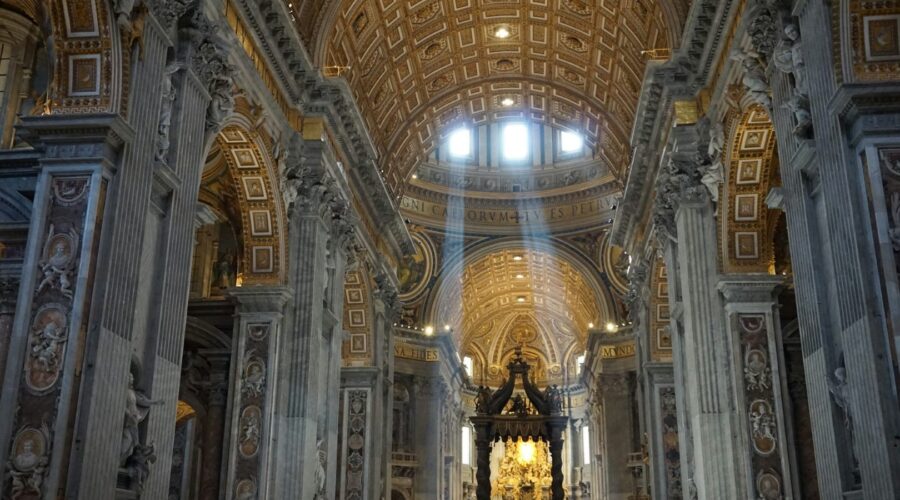
Discover the Architectural Masterpiece and Historical Significance of St. Thomas Church
A Journey Through Centuries of Faith and Heritage
Nestled amidst the vibrant streets of New York City’s Fifth Avenue, St. Thomas Church stands as a testament to architectural brilliance and enduring faith. With its towering spires and intricate Gothic Revival design, the church is an iconic landmark that has played a pivotal role in the religious and cultural landscape of Manhattan.
Historical Background
Colonial Origins
The roots of St. Thomas Church trace back to the 17th century, when Trinity Church established a mission to serve the northern communities of Manhattan. In 1758, a small wooden chapel was built on the present site, named after St. Thomas the Apostle, the patron saint of builders.
Reconstruction and Expansion
After the destruction of the original chapel in the Great Fire of 1776, the church was rebuilt in 1823. However, the growing congregation soon outgrew this structure, leading to the construction of a grand stone church in 1868.
Designed by the renowned architect Richard Upjohn, the new St. Thomas Church was modeled after the Gothic Revival churches of England. Completed in 1877, it became one of the largest and most impressive ecclesiastical buildings in the United States.
Architectural Marvel
St. Thomas Church is an architectural masterpiece that harmoniously blends the grandeur of the Gothic Revival style with modern touches.
Distinctive Facade
The church’s facade is dominated by two imposing towers, each adorned with intricate pinnacles and gargoyles. The central tower, known as the Croes Tower, is topped by a cross and a rooster weathervane, symbolizing the vigilance of the church.
Soaring Interior
Inside the church, vast vaulted ceilings create a sense of awe and reverence. The interior is adorned with stained-glass windows by renowned artists like John La Farge and Edward Burne-Jones, depicting scenes from the Bible and Christian history.
Unique Features
St. Thomas Church is known for several unique architectural features:
- The Green Vault is a stunning ceiling painted with stars and angels, creating the illusion of a celestial canopy.
- The President’s Window, dedicated to President William McKinley, features a mosaic depicting the life of Christ.
- The Nave, the central part of the church, is lined with intricately carved choir stalls.
Religious Significance
Episcopal Landmark
St. Thomas Church is a prominent Episcopal church within the Diocese of New York. It has been a gathering place for the local community and a center for religious education and outreach for centuries.
Inclusive Ministry
Throughout its history, St. Thomas Church has embraced an inclusive ministry. It was one of the first churches in the country to welcome women to the priesthood and to offer services in multiple languages.
Community Engagement
Beyond its religious services, St. Thomas Church actively engages with the surrounding community. It runs various programs, including a soup kitchen, a homeless shelter, and a community center.
Cultural Impact
Musical Legacy
St. Thomas Church has a rich musical tradition. It is home to two world-renowned choirs, the Choir of Men and Boys and the Choir of Women and Girls. The church also hosts regular concerts, lectures, and other musical events.
Literary Connections
St. Thomas Church has been mentioned in numerous works of literature, including Henry James’s “Washington Square” and Edith Wharton’s “The House of Mirth.” It has also served as a setting for films and television shows.
Visiting St. Thomas Church
Location and Hours
St. Thomas Church is located at 1 West 53rd Street, New York, NY 10019.
The church is open to the public daily for prayer and meditation:
- Monday-Friday: 8:30 AM – 5:30 PM
- Saturday: 9:00 AM – 4:00 PM
- Sunday: 9:00 AM – 1:00 PM
Tours and Events
Guided tours of the church are available by reservation. Check the website or call 212-664-9306 for details.
St. Thomas Church regularly hosts concerts, exhibitions, and special events. Visit the church website for the latest schedule.
Conclusion
St. Thomas Church is more than just a magnificent architectural landmark; it is a living testament to faith, culture, and community. Through its centuries-long history, the church has played a vital role in shaping the religious and cultural landscape of New York City. Today, it continues to be a beacon of hope, inspiration, and beauty for people from all walks of life.
Whether you are a tourist, a history buff, or simply seeking a spiritual retreat, a visit to St. Thomas Church is an unforgettable experience.
Additional Information
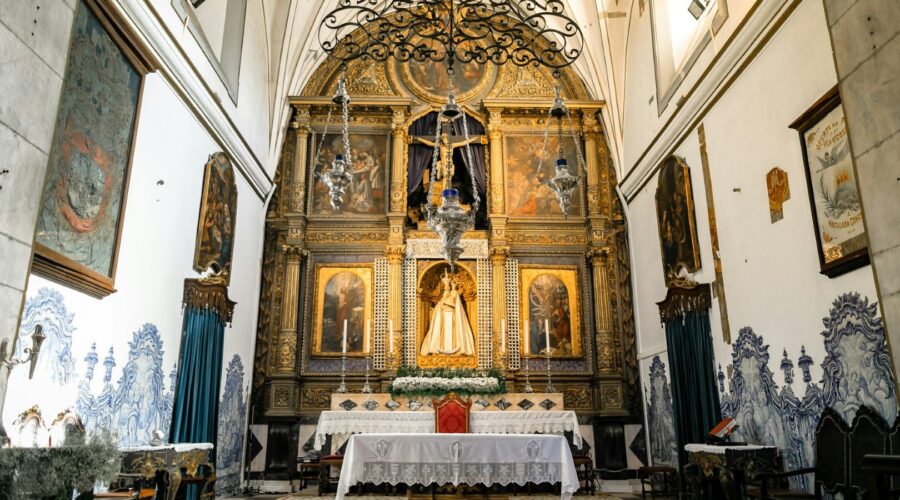
St. Paul’s Chapel: A Historic Landmark in Lower Manhattan
“`html
History
St. Paul’s Chapel is the oldest surviving public building in Manhattan, New York City. It was built between 1764 and 1766 and has been an active Episcopal parish since its consecration in 1766. The chapel is located on Broadway, between Fulton and Vesey Streets, in the heart of the Financial District.
St. Paul’s Chapel was designed by Thomas McBean, a prominent architect of the time. The chapel is built in the Georgian style, with a red brick exterior and a white steeple. The interior of the chapel is simple and elegant, with a high ceiling and large windows.
St. Paul’s Chapel has been the site of many important events in American history. In 1789, George Washington attended services at the chapel after he was inaugurated as the first President of the United States. In 1812, the chapel was used as a hospital for wounded soldiers during the War of 1812. And in 1940, the chapel was the site of a memorial service for the victims of the sinking of the RMS Titanic.
Architecture
St. Paul’s Chapel is a beautiful example of Georgian architecture. The chapel is built with red brick and has a white steeple. The exterior of the chapel is simple and elegant, with large windows and a few decorative details.
The interior of the chapel is also simple and elegant. The chapel has a high ceiling and large windows. The walls are white and the pews are made of dark wood.
The Steeple
The steeple of St. Paul’s Chapel is one of the most iconic landmarks in Lower Manhattan. The steeple is 208 feet tall and is made of white wood. The steeple is topped by a golden weather vane.
The Bell Tower
The bell tower of St. Paul’s Chapel is located at the southwest corner of the chapel. The bell tower is made of red brick and has a white steeple. The bell tower houses a bell that was cast in 1797.
Significance
St. Paul’s Chapel is a historic landmark and a significant part of New York City’s history. The chapel has been the site of many important events in American history, and it continues to be an active Episcopal parish today.
Landmark Status
St. Paul’s Chapel was designated a National Historic Landmark in 1960. The chapel is also a New York City Landmark.
Religious Significance
St. Paul’s Chapel is an active Episcopal parish. The chapel offers a variety of services, including Sunday services, weekday services, and special services.
Tourism
St. Paul’s Chapel is a popular tourist destination. The chapel is open to the public every day of the week.
Visiting St. Paul’s Chapel
St. Paul’s Chapel is located at 209 Broadway, between Fulton and Vesey Streets, in the Financial District of Manhattan, New York City.
The chapel is open to the public every day of the week.
- Monday-Friday: 10:00am-6:00pm
- Saturday: 10:00am-5:00pm
- Sunday: 8:00am-6:00pm
There is no admission fee to visit St. Paul’s Chapel.
More Information
For more information about St. Paul’s Chapel, please visit the chapel’s website: https://www.saintpaulschapel.org
“`

St Martin’s Church: A Historical and Architectural Gem in the Heart of Canterbury
Introduction
St Martin’s Church is an ancient and beautiful place of worship located in the heart of Canterbury, England. With a history stretching back to the Norman Conquest, the church has witnessed centuries of religious, social, and architectural change. This article delves into the fascinating history, architectural features, and religious significance of St Martin’s Church, providing a comprehensive guide for visitors and history enthusiasts alike.
Historical Overview
Anglo-Saxon and Norman Origins
The earliest known church on the site of St Martin’s dates back to the Anglo-Saxon period, around the 6th century AD. This humble wooden structure was replaced by a stone church built by the Normans after the Conquest in 1066. The Norman church formed part of the Abbey of St Augustine, one of the most important religious institutions in medieval England.
Medieval Enlargement and Renovation
During the 12th and 13th centuries, St Martin’s Church underwent significant expansion and renovation. The nave was extended, the chancel was rebuilt, and the tower was added. The church also acquired a number of important relics, including the head of St Augustine of Canterbury.
Tudor and Stuart Period
The Tudor and Stuart periods saw further changes to St Martin’s Church. The interior was remodeled in a more Protestant style, and the tower was raised to its present height. The church also played a role in the English Civil War, being used as a garrison by Royalist forces.
Victorian Restoration
In the 19th century, St Martin’s Church underwent a major restoration under the direction of architect George Gilbert Scott. Scott’s work included rebuilding the chancel, adding a new organ, and installing stained glass windows. The restoration restored the church to its former glory and ensured its preservation for future generations.
Architectural Features
St Martin’s Church is a remarkable example of Norman and Gothic architecture.
Exterior
The exterior of the church is dominated by the imposing tower, which rises to a height of 75 meters. The tower features a series of arched windows and is topped by a battlemented parapet. The nave and chancel are both long and rectangular, with large windows that flood the interior with light.
Interior
The interior of the church is spacious and airy, with a vaulted ceiling supported by massive columns. The nave and chancel are separated by a large chancel arch. The chancel contains a beautiful stained glass window depicting the crucifixion, and the nave is adorned with a series of memorials to former members of the congregation.
Crypt
Beneath the chancel lies a large vaulted crypt. The crypt dates back to the Norman period and houses a collection of medieval artifacts, including a stone coffin.
Religious Significance
St Martin’s Church has been a center of Christian worship for over a thousand years. The church is dedicated to Saint Martin of Tours, a 4th-century bishop known for his generosity and compassion. Over the centuries, the church has played an important role in the religious life of Canterbury and has been visited by countless pilgrims and worshippers.
Visiting St Martin’s Church
St Martin’s Church is open to visitors every day of the week. Visitors are welcome to explore the church, admire its architecture, and learn about its history. Guided tours are available by appointment.
Conclusion
St Martin’s Church is a beautiful and historic building that has stood at the heart of Canterbury for centuries. Its rich history, stunning architecture, and religious significance make it a must-visit destination for anyone interested in history, architecture, or religion. Whether you are a local resident or a visitor from afar, be sure to take some time to explore this architectural gem and immerse yourself in its fascinating story.
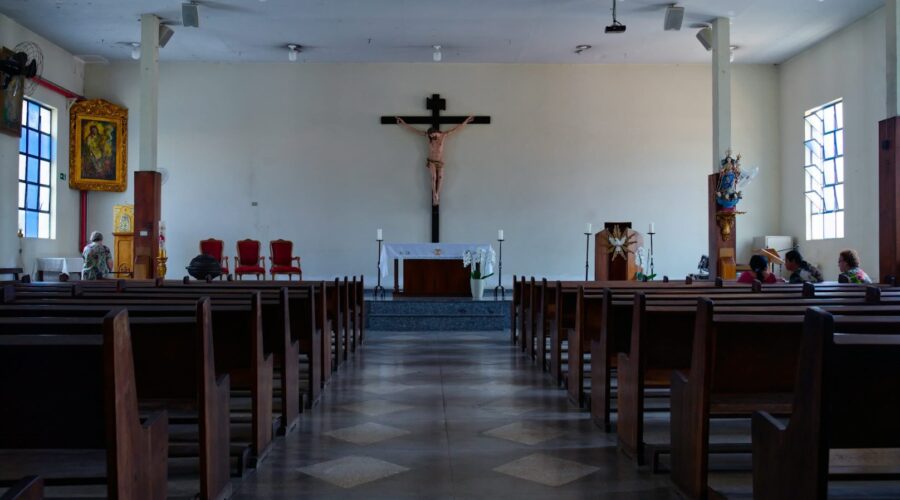
Explore the Historic Grandeur and Spiritual Significance of San Carlo al Corso
Nestled in the heart of Rome’s vibrant historical center, San Carlo al Corso stands as a testament to Baroque architectural splendor and a beacon of Catholic faith. This magnificent church, dedicated to Saint Charles Borromeo, captivates visitors with its intricate details, rich history, and profound spiritual significance.
History and Architectural Masterpiece
San Carlo al Corso was commissioned by the Cardinal Protector of the Lombard Order in 1610 and designed by the renowned architect Onorio Longhi. The church’s construction spanned several decades, with the facade being completed in 1669. The result is a harmonious blend of architectural styles, showcasing elements from the Renaissance, Baroque, and Mannerist periods.
Inspired by Saint Charles Borromeo
The church’s dedication to Saint Charles Borromeo, the 16th-century Archbishop of Milan, reflects the tremendous impact he had on the Catholic Church. Known for his piety, zeal for reform, and devotion to the sick and needy, Saint Charles Borromeo became a model of Christian leadership. His life and legacy continue to inspire the faithful to this day.
Baroque Splendor
The interior of San Carlo al Corso is a symphony of Baroque extravagance. Its soaring dome, adorned with frescoes depicting scenes from Saint Charles Borromeo’s life, dominates the space. The walls and ceiling are adorned with opulent paintings, sculptures, and intricate carvings that seamlessly blend art and devotion.
Highlights of the Interior
- Cappella Borromeo: The heart of the church, this chapel houses relics of Saint Charles Borromeo and showcases stunning artwork.
- Altar of the Blessed Sacrament: This grand altar, designed by Pietro da Cortona, features a tabernacle adorned with precious gems.
- Frescoes: The church’s ceilings are adorned with a series of frescoes by renowned artists such as Guido Reni and Carlo Maratta.
Spiritual Significance and Community
Beyond its architectural grandeur, San Carlo al Corso holds immense spiritual significance as a center of worship and community. It is a place where the faithful gather for Mass, prayer, and fellowship.
Devotion to Saint Charles Borromeo
Pilgrims from around the world visit San Carlo al Corso to pay homage to Saint Charles Borromeo. The church houses a statue of the saint, which is said to grant miracles to those who pray to him.
Community Center
The church also serves as a hub for the local community, offering a variety of programs and services. These include religious education classes, social gatherings, and outreach programs for the less fortunate.
Visiting San Carlo al Corso
If you plan to visit San Carlo al Corso, here are some tips to make the most of your experience:
Hours and Admission
The church is open daily from 7:00 am to 7:00 pm. Admission is free of charge.
Guided Tours
Guided tours are available upon request. Contact the church directly for more information.
Respectful Attire
When visiting a church, it is customary to dress respectfully. Avoid wearing shorts, tank tops, or revealing clothing.
Photography
Photography is permitted inside the church, but please be respectful of others during worship services.
Conclusion
San Carlo al Corso is a captivating masterpiece of architecture, a sanctuary of faith, and a vibrant community center. Its rich history, stunning beauty, and spiritual significance make it a must-visit destination for both tourists and pilgrims alike. Whether you seek inspiration, admire art, or connect with your faith, San Carlo al Corso offers an unforgettable experience that will stay with you long after your visit.
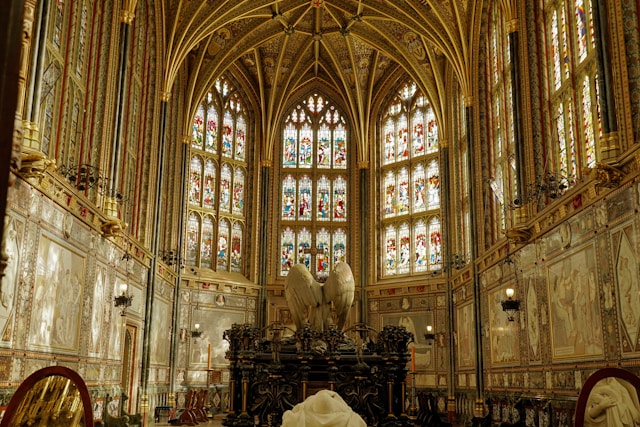
Discover the Enduring Legacy and Spiritual Treasures of St. Rita Church
A Cherished Beacon of Faith and History
Nestled amidst the vibrant streets of North Philadelphia, St. Rita Church stands as a testament to faith, architectural grandeur, and community spirit. Founded in 1850, this historic parish has witnessed over a century and a half of unwavering devotion and served generations of worshippers.
An Architectural Marvel
St. Rita Church boasts a breathtaking Gothic Revival design that has captivated hearts for centuries. Built from locally quarried Wissahickon schist, its towering spires and intricate stonework create an awe-inspiring presence. The interior is equally impressive, adorned with stained glass windows, vaulted ceilings, and intricate carvings.
Iconic Stained Glass Windows
The church’s stained glass windows are a symphony of color and artistry. Depicting biblical scenes, patron saints, and historical events, they illuminate the sanctuary with ethereal beauty. Visitors marvel at the intricate details and vibrant hues that bring the stories to life.
Monumental Organ
The Casavant Frères organ, installed in 1929, is a majestic instrument that fills the church with rich, harmonious sounds. Its 3,235 pipes, spread across three manuals and 47 ranks, create a breathtaking acoustic experience during Masses and concerts.
A Sanctuary for Devotion
Beyond its architectural splendor, St. Rita Church is a sanctuary for spiritual growth and community. The parish offers a wide range of services, including:
Mass Schedule
* Daily Mass: Monday-Friday at 7:00 am
* Saturday: 4:00 pm (Vigil)
* Sunday: 7:30 am, 9:00 am, 11:00 am (Solemn), and 5:00 pm (Spanish)Reconciliation
* Monday-Thursday at 4:30 pm
* Saturdays at 3:00 pmPrayer Groups and Devotions
* St. Rita’s Shrine (Monday-Friday at 9:00 am)
* Divine Mercy Chaplet (Sundays at 3:00 pm)A Vibrant Community Center
St. Rita Church is not merely a place of worship; it is also a thriving community center that serves the needs of its surrounding neighborhood. The parish offers a variety of programs and services, including:
Community Evening School
* Free tutoring and education for adults in the community
Senior Citizen Center
* Social activities, health programs, and support services for senior citizens
Food Pantry
* Assistance for families and individuals facing food insecurity
The Legacy of Saint Rita of Cascia
The church is named after Saint Rita of Cascia, an Italian saint known for her unwavering faith and devotion to God. St. Rita’s life has inspired countless individuals, and her shrine within the church is a popular pilgrimage site for those seeking miracles and intercessions.
Visiting St. Rita Church
St. Rita Church is open to the public for tours and visitation. Visitors are welcome to admire the architectural beauty, explore the shrine, and attend Mass.
Location and Contact Information
Address: 1166 S Broad Street, Philadelphia, PA 19146
Phone: (215) 339-0960
Website: www.stritaparish.orgConclusion
St. Rita Church is a living testament to the enduring power of faith, architectural brilliance, and community spirit. Its hallowed halls have witnessed centuries of worship, devotion, and service. Whether seeking spiritual guidance, artistic inspiration, or a sense of belonging, visitors and worshippers alike find solace and upliftment within its walls. As a beacon of light in the heart of Philadelphia, St. Rita Church continues to touch the lives of generations to come.
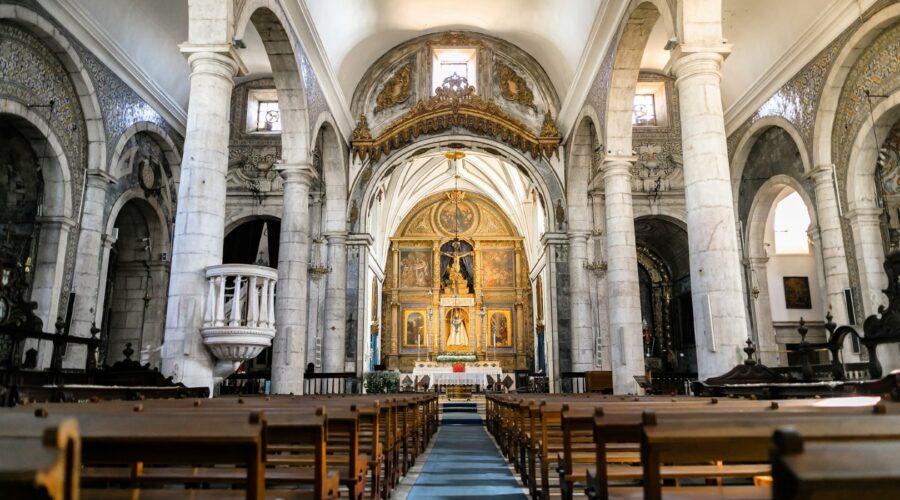
St. Mark’s Episcopal Church: A Spiritual Haven in the Heart of New Canaan
Nestled amidst the picturesque town of New Canaan, Connecticut, St. Mark’s Episcopal Church stands as a beacon of faith and community. Established in 1854, this historic parish has been a spiritual home for generations of believers, offering a vibrant and welcoming environment for all.
History and Architecture
Foundation and Growth
St. Mark’s traces its origins to a small group of Episcopalians who met in a private home in 1854. As the congregation grew, they purchased a plot of land on Main Street in 1855 and constructed a modest chapel. Over the years, the parish expanded, adding a parish house, a rectory, and a larger sanctuary.
Architectural Heritage
The current sanctuary, designed in the Gothic Revival style, was completed in 1888. Its soaring spires and stained glass windows create an awe-inspiring atmosphere. The interior is adorned with intricate woodwork, marble sculptures, and a magnificent pipe organ.
Spiritual Life and Worship
Weekly Services
St. Mark’s offers a variety of weekly services to meet the needs of its diverse congregation. Sunday services include:
- Holy Eucharist (8:00 AM): A traditional liturgy with music and readings.
- Sunday School (9:30 AM): Classes for children and adults of all ages.
- Holy Eucharist (10:30 AM): A contemporary service with modern music and topical sermons.
Special Services
In addition to weekly services, St. Mark’s hosts special events throughout the year, such as:
- Ash Wednesday Service
- Holy Week Services
- Christmas Eve Service
Sacraments and Pastoral Care
St. Mark’s offers the sacraments of Baptism, Confirmation, Holy Eucharist, and Reconciliation. The clergy provide pastoral care to parishioners in times of need, such as during illness or bereavement.
Community Outreach and Missions
St. Mark’s is deeply committed to serving the community and beyond. The parish supports various outreach programs, including:
- The Open Door Shelter: A local homeless shelter.
- Meals on Wheels: Delivering meals to homebound individuals.
- Mission trips: Sending teams to provide assistance in disaster-stricken areas.
Music and the Arts
Music plays a vital role in the worship life of St. Mark’s. The parish boasts several choirs, including:
- The Chancel Choir: A mixed-voice choir that sings at the 10:30 AM service.
- The Parish Choir: A smaller choir that assists with special services.
- The Children’s Choir: A choir for children ages 4-12.
St. Mark’s also hosts a variety of musical events, such as concerts, recitals, and workshops.
Education and Formation
St. Mark’s is committed to the spiritual growth and education of its members. The parish offers a wide range of programs, including:
- Adult Education Classes: Courses on theology, scripture, and current events.
- Confirmation Classes: Preparing youth and adults for Confirmation.
- Retreats and Workshops: Opportunities for spiritual reflection and growth.
Leadership and Staff
St. Mark’s is led by a rector, who is assisted by a team of deacons, lay leaders, and staff. The parish is committed to fostering a supportive and inclusive community where all members feel valued and welcome.
Role Name Rector The Rev. Dr. John Smith Deacon The Rev. Deacon Mary Jones Senior Warden Mr. Michael Brown Junior Warden Ms. Susan White Contact Information
Address: 111 Main Street, New Canaan, CT 06840
Phone: (203) 966-3530
Website: www.stmarksnewcanaan.org
Conclusion
St. Mark’s Episcopal Church is a thriving and vibrant parish in the heart of New Canaan. With its rich history, beautiful architecture, and welcoming community, St. Mark’s offers a place of spiritual nourishment, growth, and service for people of all ages and backgrounds. Whether you are seeking a new spiritual home or simply looking for a place to connect with others, St. Mark’s Episcopal Church invites you to experience the transformative power of faith.